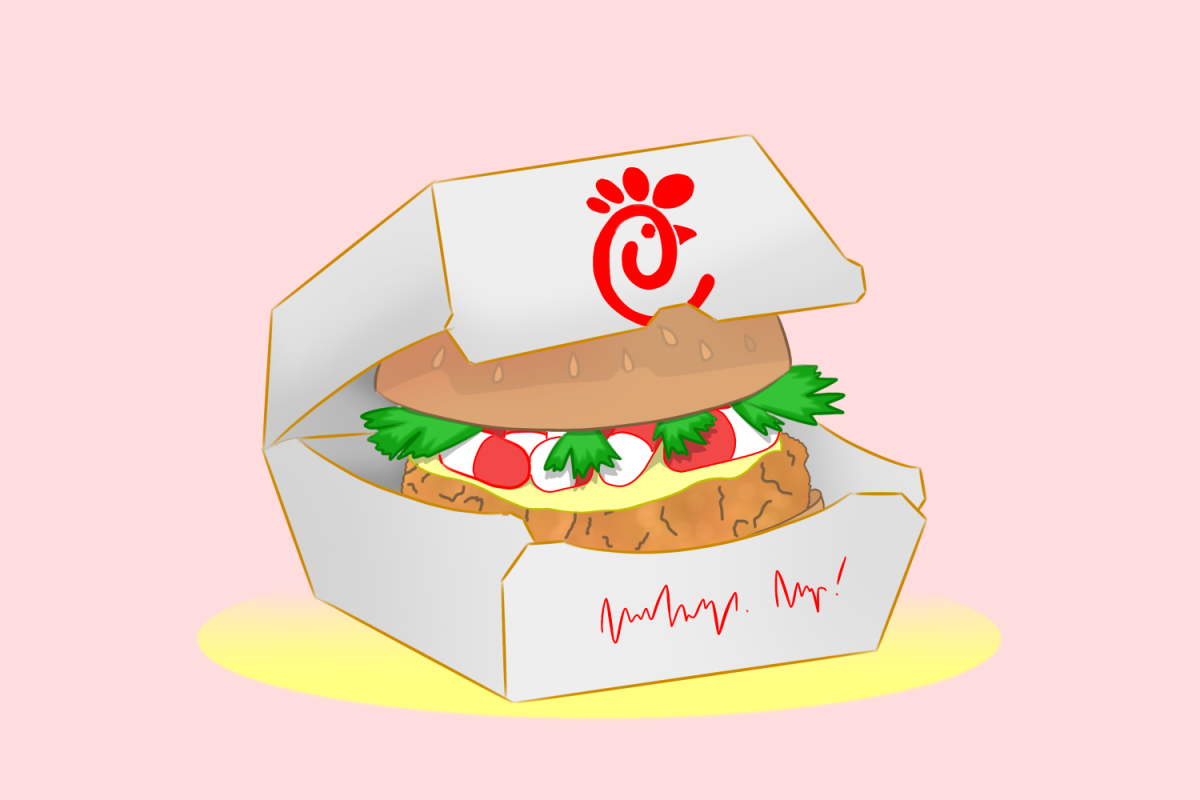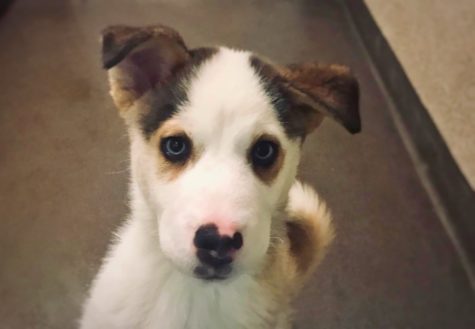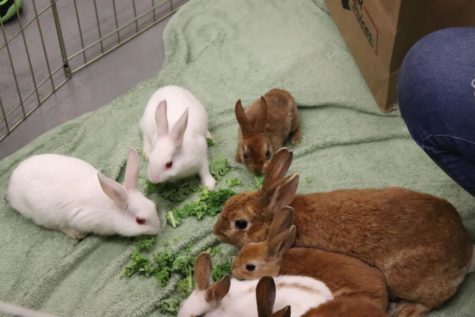The question surrounding the ethics of animal testing has wracked the scientific and cosmetic communities for years. Hundreds of millions of animals are tested in U.S. labs annually, and many are left crippled, poisoned or even dead as a result. For the typical pesticide at the department store, 10 thousand animals are killed.
“It’s unethical to imprison and experiment on other beings no matter what your goals may be. And because animal species differ from one another in many ways — especially on a cellular level, where diseases originate — it’s even more unlikely that animal experiments will yield results that can be meaningfully applied to humans,” said Melissa White, a correspondent from the animal rights organization the People for the Ethical Treatment of Animals (PETA). “The species that are most frequently used in laboratory experiments are chosen mainly because they are cheap and easy to handle. This should be a clue that animal testing is unlikely to produce results that apply to humans.”
Although there is a chance that the use of animals in experimentation could lead to a significant advancement in the medical field, critics cite the hundreds, or perhaps thousands, of animals forced to partake in the trials. According to PETA, over 90% of these experiments end up unsuccessful.
Instead, PETA advocates for methods such as in-vitro testing, computer modeling, or the consensual use of human volunteers.
“Human clinical studies, cadaver studies, high-power computer simulations, and studies that track the origin of diseases and how they spread [are some alternatives],” White noted. “Creative scientists have used human brain cells to develop a model ‘micro-brain’ that can be used to study tumors and have also synthesized artificial skin and bone marrow.”
Currently, animals are being used in studies researching deadly diseases such as AIDS.
However, despite widespread use of animals in scientific trials — most prevalent in the U.S., Japan, and China respectively — they feature several limitations: according to NCBI, expensive costs, a lack of reproducibility, as well as its time-consuming nature have scientists searching for alternative methods.
“We definitely don’t need to test on animals for any reason. There are many research methods that are faster, more reliable, less expensive, and more humane than animal tests,” White said. “These include human clinical studies, cadaver studies, high-power computer simulations, and studies that track the origin of diseases and how they spread.”
However, scientist Thomas Daniels*, who tests animals himself, believes that these other methods are not as effective.
“Dogs were used to study the first open-heart surgeries, and that was key to providing cardiologists with the information they know now. For some of the diseases that are studied today, they can’t be studied in human subjects, or in vitro testing, and can only be determined through the use of laboratory animals,” Daniels said. “There’s no way to justify giving a life-threatening disease to a human.”
Dogs, rats, mice, rabbits, pigs, and cats are only some of the species subject to experimentation. Although reports in the past have described electrocution, burning, blinding, and surgery, Daniels states that modern animal testing has accommodated concerns about animal welfare.
“By regulation, there’s only a certain number of rodents allowed in each cage dependent upon the size of the rodent and the size of the cage. The rodents are housed in a facility that is spotless. We’re required to keep them in very sanitary conditions,” Daniels said. “One of the misconceptions is that laboratory animals are kept in horrible conditions, but at least where I work, that is not the case.”
Daniels expanded upon how these experiments are regulated to ensure the well-being of the animals.
“I can’t just do whatever I want with the rodents; I can only do very specific things written in the protocol. I can’t deviate from that, or I could lose the ability to work with that protocol,” Daniels said. “In that protocol, it also stipulates how many animals I’m allowed to use each year, and I can’t go past that number. If I need to use more in the case of an emergency, I have to write a justification as to why I need to use additional animals.”
Daniels provided a rundown of what a general experiment involving animals would look like.
“I use laboratory rodents to detect poisons that could harm humans. I introduce the sample to the animals to determine if there’s a poison in there or not. But they don’t suffer, they only get a very slight dose and very momentary discomfort, similar to what a human experiences when they get a flu vaccine,” Daniels said. “After I inoculate the animals with the sample to determine if there’s any poison in there or not, I have to monitor them for at least four hours after the inoculation to make sure they’re not suffering, or else I have to properly euthanize them.”
In most cases of animal testing, animals are either returned into captivity or euthanized after the trials.
The process begins with animal technicians in the vivarium who provide Daniels with the requested number of rodents. According to Daniels, they are housed in cages and given food and water at all times. If the cage bedding becomes dirty, they are obligated to clean it.
Daniels, who described himself as a proponent of animal testing, believes that its benefits outweigh the costs.
“If we go back to the age of Robert Koch and Louis Pasteur, a lot of what the science that we know today came from those two scientists and many others who used laboratory animals — knowledge that if they didn’t provide us with, medical science would not have progressed to where it is now,” Daniels said. “I think in general in the U.S. that laboratory animals are only used when they’re needed, used efficiently, and effectively.”
Scientist Marie Johnson*, who worked in a pharmaceutical company in years past, also has experience in lab testing animals.
“Generally, there is something that we call a target, or some interesting protein or something like that, so when we dealt with proteins, we were primarily looking at drugs. We have to decide what type of animal to test the drug in,” Johnson said. “And I have to find that before a drug goes into an animal for testing, as it goes through a number of different tests and subcultures and outside of an animal to determine whether the drug is going to work and whether the drug is toxic, whether it’s going to cause any problems later on.”
After the compound is determined to be toxic or not, the choice of the animal depends on what’s available.
“Many of the people that I work with the scientists and the researchers are very much concerned about animal welfare. And there’s a lot of effort to make sure that animals don’t suffer during experimentation,” she said. “They tried to design experiments that way. The question becomes, do you test these unknown drugs in humans, where you may not have all of the information available before you put it into a human, or to use an animal model to test.”
According to Johnson, those who work with the animals treat them with the utmost care.
“So I think the misconception is that the people working with the animals don’t care about the animals and that they’re just doing it because people think it’s easy to do it an animal,” Johnson said. “But really, the researchers are working with the animals very much care about the animals that they’re working with and try their very best to make them comfortable and treat them appropriately.”
While many companies use mice rather than dogs, monkeys, or higher primates, the latter is occasionally required as they better mimic human systems.
Many companies are working to avoid animal testing in the future.
“There are some companies that I understand PETA is providing funds for and encouraging that are developing whole body types of system and medical devices,” Johnson said. “One is Emulate Bio, another is SynDaver, and one last one is MatTek. All of these companies are trying to find a replacement for testing whole body systems of animals.”
Each come with their own set of limitations.
“But again, like in Emulate Bio, while they have a really interesting technology, it’s not a whole body type of thing, where you can test one organ and then predict whether or not you’re going to have toxic effects on other organs,” Johnson said. “SynDaver is really interesting because they are able to mimic tissues to test surgical methods, but it’s not the same as the drugs.”
Technology is advancing at a quick rate that has allowed scientists to experiment with different methods.
“Silicon Valley computer scientists have teamed up with medical researchers to produce virtual models of organs such as the heart and pancreas and diseases such as cardiovascular disease and diabetes. Other researchers have developed silicon chips that contain human cells from the various organs in separate compartments,” White said. “A test substance is injected into this chip to determine safety for the different organs. Instead of killing animals, we can now test irritancy on egg membranes, produce vaccines from cell cultures, and perform pregnancy tests using blood samples.”
Johnson hopes that these models will continue to improve so that animal testing is rendered obsolete.
“The body is a very complex system, and there are a lot of different genes that can be effective in different areas of the body,” she said. “To build a model like that is going to be very difficult, but I think we’re getting to that point.”
When it comes to modeling, for instance, it becomes challenging to predict whether a certain drug intended for the liver could have detrimental effects on the brain or the blood system.
“It’s fine to know from a cell culture whether a drug will work a specific liver cell, but once you have a drug, in a whole body, whether it’s an animal or human, you don’t know what the effect it’s going to have on other organs,” Johnson concluded.
Similarly, animal systems are unlikely to reflect those of humans’ accurately.
“Just as you can’t figure out how to drive from New York City to San Francisco by looking at a map of Australia, animal experiments teach us nothing about humans because other species absorb, metabolize, and eliminate substances differently than we do,” White said. “Diseases that are artificially given to animals in laboratories are never the same as those that occur naturally in human beings.”
Animal testing extends far beyond the medical industry and into cosmetics. Although the Food and Drug Administration (FDA) does not require the use of animals in cosmetic experiments, 500 thousand around the world die for it every year.
Varsha Raj, a sophomore at Carlmont, discussed the issue of using animals to test cosmetics.
“Using animals in any way that is going to harm them for our benefit is flat out wrong,” Raj said. “Animals are no less than humans and deserve to be treated with as high of a priority as we give to the human population.”
White shared a similar belief.
“Animals and humans are so physiologically different that the results of animal studies are always unreliable. Product tests on animals are particularly meaningless because there is no way to know if a product or drug that appears to be safe for animals is also safe for humans,” White said. “Animals are thinking, feeling beings who deserve our love and respect.”
Raj strongly believes that animal testing is wrong under any circumstance.
“Just because we want new medicines it does not give us the right to harm or possibly kill animals. In some cases drugs do end up debilitating the animal, harming it, or even killing it,” she added.
Raj’s opinion corresponds with that of the general U.S. population; 52% of adults are against animals being used for medical testing.
She herself advocated for computer modeling.
“If drugs need to be tested, they must be done on a simulator or a controlled environment where there is proof that no harm will be done to the animal, its offspring, or any other natural processes it needs to survive,” Raj said.
White was able to offer a variety of tips for those who are concerned about upholding the rights of animals.
“Purchase only cruelty-free products, donate only to health charities that never fund animal experiments, and urge companies that still test on animals to adopt cruelty-free policies,” White said. “If you are expected to perform or observe a dissection at school, talk to your teacher as early as possible about alternative projects. There are plenty of sophisticated alternatives, such as computer models that simulate animals’ bodies without harming anyone.”
PETA, among other animal rights groups, conducts eyewitness investigations into animal testing, pushes government agencies to stop conducting experiments on animals, and encourages pharmaceutical, chemical, and consumer product companies to replace tests on animals with more effective non-animal methods.
Hair stylist Carolyn Herlihy works for the cosmetic company AVEDA, which bans the use of animals in testing their products.
“AVEDA is always keen on being all-natural. Recently, in the last few years, we’ve been awarded the cruelty-free award, which is always a big deal,” Herlihy said. “We’ve never tested on animals, and what’s great about AVEDA is not just our being animal-free, but we help people in need. We give jobs to people in Haiti and the Himalayas, and we always give back to the community and the world around us.”
Herlihy considered it important to treat animals ethically.
“I believe that animals have feelings, and they should be treated ethically and fairly. It doesn’t matter whether they’re pets or whether their being farmed, they should be treated well,” Herlihy said. “It’s easy to say that it’s okay to test on the not-cute animals such as rats or mice, but I think that animals are animals, and you can’t pick and choose. It’s not fair to test on humans, and it shouldn’t be fair to test on animals.”
AVEDA has been animal-free and people-tested since the company was first founded in 1978.
“Cruelty-free is the only way to be!” Herlihy said. “AVEDA’s commitment to caring for animals and wildlife reaches far and wide — we live and breathe it.”
*name has been changed to protect the identity of the speaker


















Andre Menache • May 30, 2019 at 3:07 am
As a veterinary surgeon, I would not test drugs intended for horses on parrots. People understand that argument straight away. So why continue to test drugs for humans on rats, dogs and monkeys ? What is missing from this article is the voice of medical researchers who explain why no animal can predict human outcome for pharmaceutical drug testing and human diseases. I invite Zachary Khouri to write a follow up article in which he interviews Dr Ray Greek (website http://www.afma-curedisease.org/). For those interested in a watching a short video on the subject, here is something I produced a few years ago : https://youtu.be/4_Pn0l6ddMw
Lucy Post • May 26, 2019 at 4:08 am
Not only does experimenting on animals cause massive suffering, it’s delaying cures for human diseases. Nine out of ten experimental drugs fail in human trials, according to the FDA, because experiments on animals cannot accurately predict how drugs will affect humans. While humans and other animals are alike in our ability to feel pain and suffer, the way we respond to drugs and treatments can differ vastly between species. It’s time to embrace humane, human-relevant research.